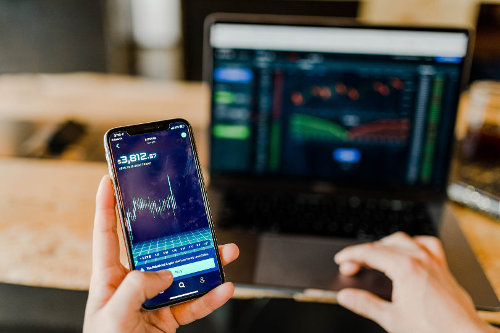So you want to start day trading? You’ve invested in all the trading tools you need, and you’ve spent the time needed to learn how to analyze price movements as well as a few basic strategies that you can continue building on as you go. Maybe you’ve already spent some time trading just to get your feet wet. Great. Now there is just one more thing to figure out. How much money is needed to start day trading?

In an attempt to figure that out, we asked Jimmy who co-founded www.BullMarketz.com and this is what they had to say.
Different Budgets for Different Markets and Instruments
The first step in figuring out how much capital you need to trade is to decide which market you’re going to trade on. The reason for this is that certain brokers require certain types of deposits and some markets allow you to use leverage.
You second step would be preparing the necessary capital. You can fund your trade from, obviously, your own money. But there are other alternatives, such as funding from various lenders available both online and offline, such as Lear Capital. Make sure you read reviews – here’s the review for Lear Capital – before deciding on anything.
Because of those, we’ll take a look at the capital requirements for three of the most popular markets for day traders.
1. Stock Trading
If you’re planning to start day trading stocks or other exchange-traded instruments such as futures and commodities, you’ll need quite a lot of available capital.
A good rule of thumb is that $25,000 is enough to get started, but it won’t hurt if you can allocate more than that. This amount will give you the opportunity to buy a handful of stocks at the same time and then hold on to them for as long as you need, whether that’s a few hours or even a couple of days. If you don’t deposit enough, you run the risk of losing out on opportunities that present themselves due to a lack of available funds.
Obviously, the amount needed will fluctuate a bit depending on which type of stocks you’re planning to trade. If you’re only planning on trading penny stocks, you could potentially make it with less. Just note that penny stock trading is rarely advisable.
2. Forex Trading
Forex trading and other similar derivatives provide exciting opportunities for traders and thanks to the fact that leverage is always used, you’ll need less available capital.
Today, due to new EU regulations, forex brokers in Europe are limited to offering a maximum of 50:1 – compared to the previous limit of 200:1 – but that is still enough to stretch your dollars.
Even though most forex and CFD brokers have a minimum deposit limit of around $100, you should expect to need more than that. We usually recommend having at least $5,000 on your trading account at all times, but with the double, you’ll have even more opportunities.
It’s also worth noting that most forex brokers offer special benefits, unique features, deals and even freebies to high-rollers so you can try and base your capital on the benefits you’re offered.
3. Cryptocurrency Trading
We have seen an incredible increase in the interest for cryptocurrencies lately, and if you’re planning to day trade these digital currencies, you have a few options in terms of capital.
Unlike stocks that have to be bought in full, you can invest smaller amounts in cryptocurrencies. For example, just because Bitcoin is worth $10,000 doesn’t mean you have to invest $10,000. Instead, you can buy a 1/10 of a Bitcoin for $1,000 or buy for even smaller amounts. Naturally, this means you don’t need as much capital to trade cryptocurrencies as stocks, and $10,000 will get you quite far.
Also, cryptocurrencies’ volatile nature means that you can make a profit with less than with other more traditional instruments.
In addition, many cryptocurrency day traders trade their assets as derivatives – usually CFDs. This is done with forex and CFD brokers, meaning you can start day trading with as little as $5,000.
Note that stocks can be traded as CFDs as well, although it’s much less common for professional day traders to trade stocks like that.
Limit Your Spending – The 1 Percent Rule
Before we send you off on your day trading journey, we want to mention budgeting as our last tip.
At no point should you trade with all your available capital at once, and even more important is to not put too much on each trade. Generally speaking, day traders never use more than 1 percent of their available capital per trade and neither should you.


